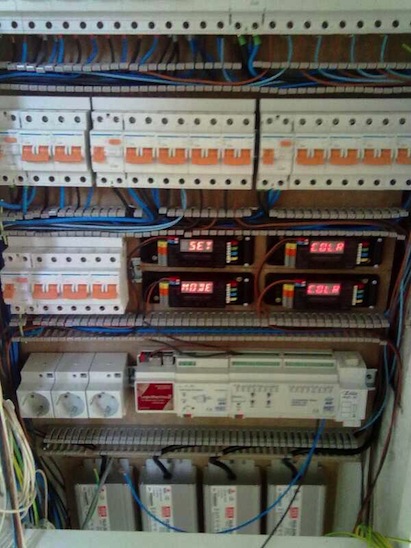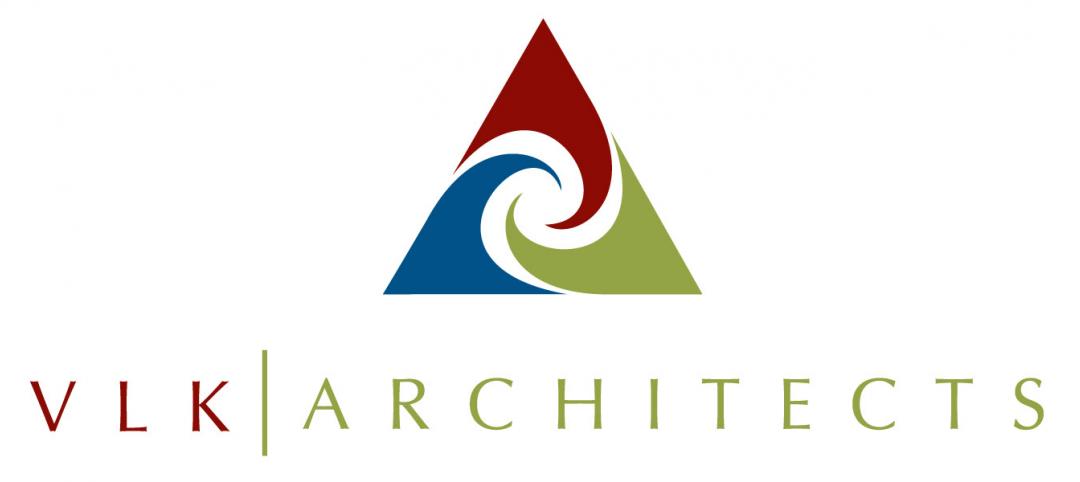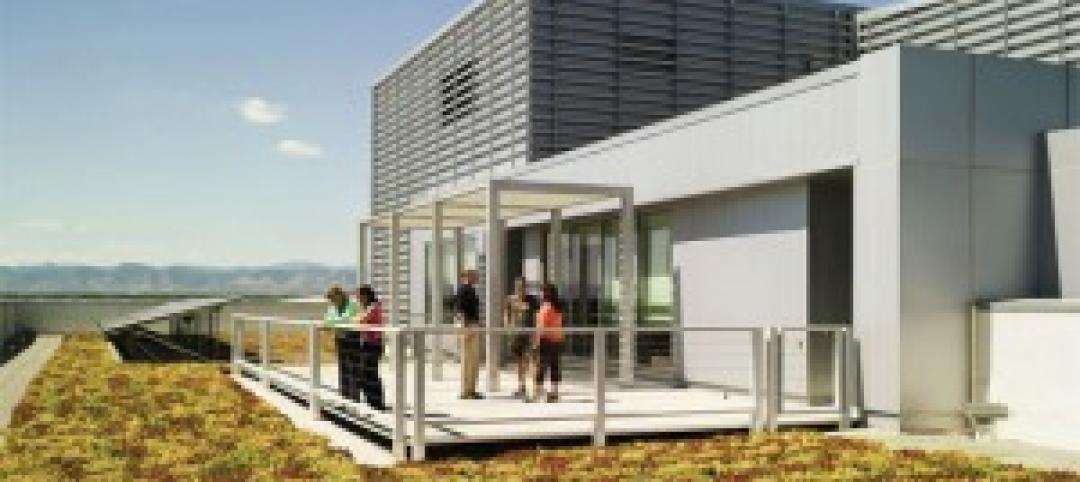Smart building technology has the potential to reduce global energy use dramatically, and is already changing how we live and work, according to Jones Lang LaSalle’s latest report, The Changing Face of Smart Buildings: The Op-Ex Advantage. The new report examines the impact of smart buildings on the workplaces andcities of the future, including tracking technology advancements and environmentally-sustainable contributions.
“The global adaptation of smart building technology marks a historic opportunity for a single technology class to significantly reduce the energy consumed by cities around the world,” said Dan Probst, Chairman of Energy and Sustainability Services at Jones Lang LaSalle. “Upon installation, automated building systems generate profound reductions in a building’s energy consumption because the carbon footprint of the building and its city literally shrinks with every equipment data sensor.”
The report, which chronicles the current and future impacts of smart buildings on the way people around the globe live and work, portrays a greener, less expensive and more energy-efficient built environment.
Impact #1: Reduction in Energy Use
Making dramatic energy savings possible for property owners and investors, investment in smart building technologies can directly affect the energy consumption and air quality of a city. Commercial, residential and industrial buildings account for 40 percent of global energy consumption and 33 percent of global carbon dioxide equivalent (CO2e) emissions. The U.S. commercial real estate sector alone consumes more than $179 billion in energy annually, 30 percent of which is wasted.
The report cites a 2012 study* estimating that $289 billion in building efficiency investments would produce savings in excess of $1 trillion in the United States alone, with every dollar invested in energy efficiency producing three dollars of operational savings. Smart building technology requires low upfront investment and can generate energy savings of eight to 15 percent annually almost immediately after deployment, with the potential for incremental improvements over time.
Impact #2: More Data, More Energy-Use Disclosure
JLL’s report predicts that cities will drive smart building efficiency regulations, with the owners and occupants of smart buildings serving as powerful market voices. Eight major U.S. cities, including Boston, New York and Philadelphia, have established building energy benchmarking ordinances requiring thousands of commercial, residential and municipal buildings to track, verify and publicly report their energy consumption. Cities have plenty to gain by putting these measures into place. New York City’s suite of energy efficiency ordinances and laws is expected to generate net savings of $7 billion and create more than17,000 construction-related jobs over 10 years—and smart buildings will help achieve these results.
Impact #3: CSR Benchmarking Improvement
Energy efficiency directly improves a company’s corporate social responsibility (CSR) profile. Redirecting energy spend to building efficiency has allowed some corporate decision-makers to gain the reputational advantages of doing the right thing by the environment while also gaining significant performance and productivity improvements. Another benefit is a smart building system's ability to measure and report greenhouse gas emissions. Some building owners feed building emissions data to multiple benchmarking organizations, such as Greenprint and GRESB, Ceres and similar third-party reporting organizations, and smart systems can consolidate data from across a portfolio of hundreds of facilities.
Impact #4: Improved Investment ROI
Relative to other energy-related building upgrades, smart building technology requires little upfront capital expenditure and smart buildings generally cost less to operate than buildings operating solely on legacy systems,therefore offering a long-term reduction in operating expenses. Smart building technology investments typically pay for themselves within one or two years. Also driving the fast payback is the low cost of automated building technology, which has fallen as adaptation has increased. For example, intelligent lighting components that cost $120 four years ago today sell for just $50.
“Today’s workplace strategies favor flexible, multi-use work environments, and smart buildings will be able to adapt more readily to these new workplace concepts thanks to their highly-automated—and therefore customizable—individual interior controls,” said Probst. “Forward-looking corporate tenants expect their office facilities to offer flexible lease agreements and sophisticated, connected building networks.”
* United States Building Energy Efficiency Retrofits Report: Marketing and Financing Modelspublished by the Rockefeller Foundation and Deutsche Bank Group’s DB Climate Change Advisors.
About the report
Jones Lang LaSalle’s report, The Changing Face of Smart Buildings: The Op-Ex Advantage, provides a comprehensive, state-of-the-market view on smart buildings and the first multi-dimensional business case for smart technology investment. The report covers multiple issues critical to corporate boards and executive management such as investment payback and ROI, environmental sustainability, operational reliability and operational risk mitigation. The full report can be downloaded here: http://bit.ly/HvhSx6
About IntelliCommand
JLL’s IntelliCommandTM helps owners take advantage of this opportunity by providing 24/7 real-timeremote facility monitoring and control across multiple locations, combined with the JLL integrated facilities management operations. The system includes continuous building commissioning, automatic work order generation, seamless smart grid integration and compatibility with all major brands of automatedbuilding system sensors.
For more news, videos and research resources on Jones Lang LaSalle, please visit the firm’s U.S. media center Web page. Bookmark it here: http://www.us.am.
About Jones Lang LaSalle
Jones Lang LaSalle (NYSE:JLL) is a professional services and investment management firm offering specialized real estate services to clients seeking increasedvalue by owning, occupying and investing in real estate. With annual revenue of $3.9 billion, Jones Lang LaSalle operates in 70 countries from more than 1,000 locations worldwide. On behalf of its clients, the firm provides management and real estate outsourcing services to a property portfolio of 2.6 billion square feet and completed $63 billion in sales, acquisitions and finance transactions in 2012. Its investment management business, LaSalle Investment Management, has $46.7 billion of real estate assets under management. For further information, visit www.jll.com.
Related Stories
| Dec 1, 2011
VLK Architects’ office receives LEED certification
The West 7th development, which houses the firm’s office, was designed to be LEED for Core & Shell, which gave VLK the head start on finishing out the area for LEED Silver Certification CI.
| Nov 18, 2011
Centre for Interactive Research on Sustainability opens
Designed to exceed LEED Platinum, the Centre for Interactive Research on Sustainability (CIRS) is one of the most innovative and high performance buildings in North America today, demonstrating leading-edge green building design products, technologies, and systems.
| Nov 17, 2011
Campus-wide energy-efficiency program aims to deliver $3.5 million in energy and operational savings
Merced College and Honeywell will use the school’s energy usage statistics to develop a course curriculum on sustainability, and raise awareness among students of the positive impact conservation practices contribute to the community.
| Nov 16, 2011
Project completion of BRAC 132, Office of the Chief Army Reserve Building, Ft. Belvoir, Va.
This fast-tracked, design-build project consists of a three-story, 88,470 sf administrative command building housing approximately 430 employees.
| Nov 15, 2011
Miller joins Perkins Eastman as regional manager, Middle East and Northern Africa
Miller joins Perkins Eastman with more than 48 years of experience in architecture, design management, and construction administration for planning and infrastructure.
| Nov 11, 2011
How Your Firm Can Win Federal + Military Projects
The civilian and military branches of the federal government are looking for innovative, smart-thinking AEC firms to design and construct their capital projects. Our sources give you the inside story.
| Oct 25, 2011
Commitment to green building practices pays off
The study, conducted by the Pacific Northwest National Laboratory, built on a good indication of the potential for increased productivity and performance pilot research completed two years ago, with similarly impressive results.
| Oct 18, 2011
Dow Building Solutions invests in two research facilities to deliver data to building and construction industry
State-of-the-art monitoring system allows researchers to collect, analyze and process the performance of wall systems.
| Oct 17, 2011
USGBC L.A. Chapter's Green Gala to feature Jason McLennan as keynote speaker
Chapter to presents inaugural Sustainable Innovation Awards,
| Oct 17, 2011
Schneider Electric introduces UL924 emergency lighting control devices
The emergency lighting control devices require fewer maintenance costs and testing requirements than backup batteries because they comply with the UL924 standard, reducing installation time.

















